 |
|||||||||




 |
|||||||||





GIFFONI EXPERIENCE
40TH ANNUAL INTERNATIONAL FILM FESTIVAL: JULY 18 - 31, 2010


Photo: Giffoni Experience 2010: 40th Edition - Day 2. Actress Sofia Bruscoli attends the Giffoni Experience 2010 on July 19, 2010 in Giffoni Valle Piana, Italy. (Foto: Vittorio Zunino Celotto).
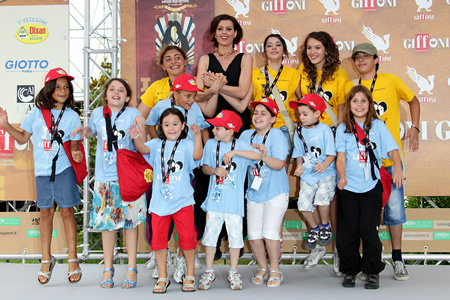
Photo: Actress Claudia Pandolfi and the children of the jury attend a photocall during Giffoni Experience 2010 on July 18, 2010 in Giffoni Valle Piana, Italy.
• The most important film festival for children.
• LOCATION: Giffoni Valle Piana, Italy.
• THE SELECTION:
162 films scheduled: 63 feature films and 99 short films.
• THE THEME: LOVE
LOVE will be the thin white line and theme of the Festival this year. In all its various facets, this feeling will be the focus around which all discussion, meetings, and screenings will revolve.
• THE JURY:
3000 children and youth from 43 Countries and 150 Italian cities. The films, as every year, will be judged by the juries made up of 3000 kids and youth from 43 Countries. The jurors come from all the 5 continents, including countries like Israel, Palestine, Jordan, India, Nigeria, South Africa, and Lithuania.
• THE FILMS
The fourteen days of the festival will be divided into two parts: the first week (18 to 23 July) for children aged 3 to 12 years, and a second (23 to 31 July) for youth aged 13 to 23. Children and youth will see and judge the 162 films including feature films and short films.
Here are a few shots (fotos © Giffoni) from the films being screened:



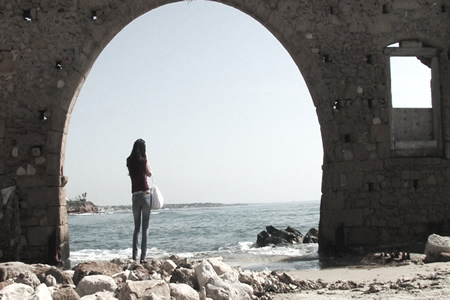
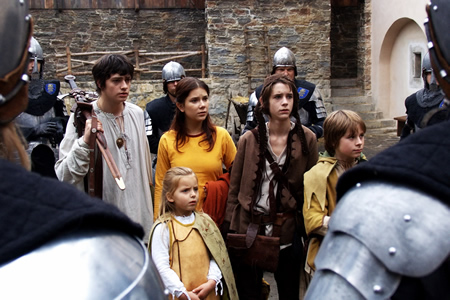


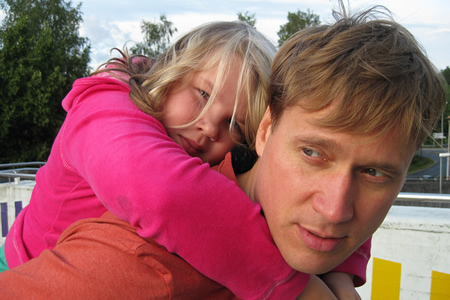
"A miracle once more," says Claudio Gubitosi, director and creator of the festival. "The driving force of Giffoni, the energy it produces, the desire of a smile, love, discovery, participation and the desire of being protagonists are all clear elements of the 40th Giffoni Film Festival."
|GlobalGiants.Com|
Edited & Posted by the Editor | 8:13 AM | View the original post

Photo: Alison Levine made history by completing the Adventure Grand Slam.
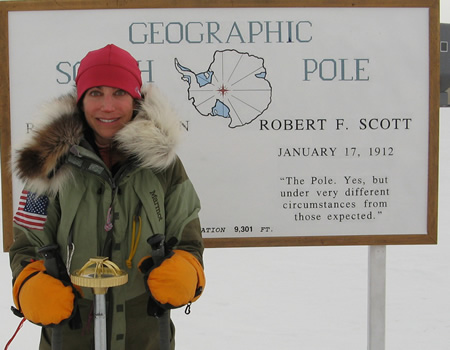
Photo: Alison Levine at the South Pole, which was just one stop on her bid to complete the Adventure Grand Slam.
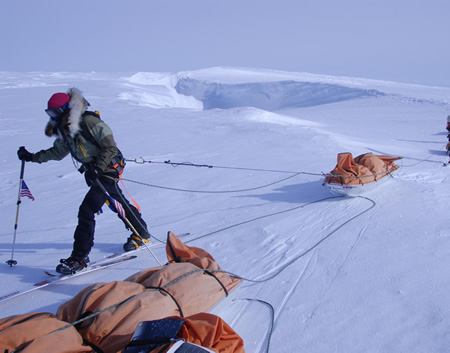
Photo: Alison Levine completes her 38-day arduous South Pole trek by skiing 10 hours a day in sub-zero temperatures with a sled containing 150 lbs of gear and supplies harnessed to her waist.
• Adventurer Alison Levine made history by completing the Adventure Grand Slam -- climbing the highest peak on each continent (Denali, Aconcagua, Elbrus, Kilimanjaro, Vinson Massif, Carstensz Pyramid, Everest) and skiing to both the North and South Poles.
"Fewer than 300 people have succeeded in climbing to the summit of the highest peak of every continent. Very few of those people have also reached the two poles, completing the Adventure Grand Slam," said Harry Kikstra, director of 7summits.com.
Alison has survived some of the most challenging environmental conditions known to man and is a sought-after consultant and lecturer. She currently serves as an adjunct professor at the United States Military Academy at West Point where she teaches cadets about leading teams in extreme environments.
|GlobalGiants.Com|
Edited & Posted by the Editor | 7:57 AM | View the original post

The U.S. Postal Service celebrated five newspaper comic strips by dedicating the Sunday Funnies stamps today. The 44-cent First-Class stamps honor comic strips: Archie, Beetle Bailey, Dennis the Menace, Garfield and Calvin and Hobbes.
"The strips, as well as their characters, may have changed over the years, yet each remains an enduring classic," said U.S. Postal Service. "Like stamps, comic strips often tell a story through humor, adventure, fantasy and sometimes even drama."
Source: U.S. Postal Service
|GlobalGiants.Com|
Edited & Posted by the Editor | 1:39 PM | View the original post
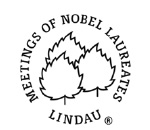
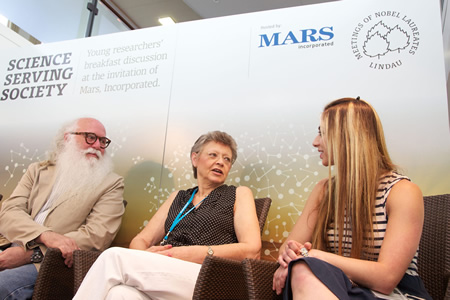
Photo: Howard Shapiro, Global Staff Officer of Plant Science and External Research, Mars, Incorporated and Françoise Barré-Sinoussi, Physiology or Medicine Nobel Laureate, discuss the impact science can have on society with Tanya Petrossian, a selected young researcher from UCLA (University of California, Los Angeles) during Scientific Panel Discussion at one of the Largest Ever Gatherings of Nobel Laureates in Lindau, Germany. Adam Smith, Editor in Chief, Nobelprize.org, moderated the panel and chaired an in-depth Q&A session with the diverse student audience.
The Lindau Nobel Laureate Meetings are a globally-recognized forum which has been bringing Nobel prizewinners and the world's most promising young scientists together since 1951. The week-long, annual event takes place in Lindau, set on the banks of Lake Constance between Germany, Austria and Switzerland. The meetings consist of panel discussions, lectures, seminars and social events.
This year's meeting was an interdisciplinary event bringing together young researchers from all continents and 61 Nobel Laureates in physiology, medicine, physics and chemistry. Following more than 30,000 applications, 650 young researchers were selected to participate in the meetings that took place from 27th June - 2nd July 2010.
|GlobalGiants.Com|
Edited & Posted by the Editor | 9:11 AM | View the original post
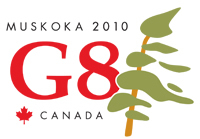
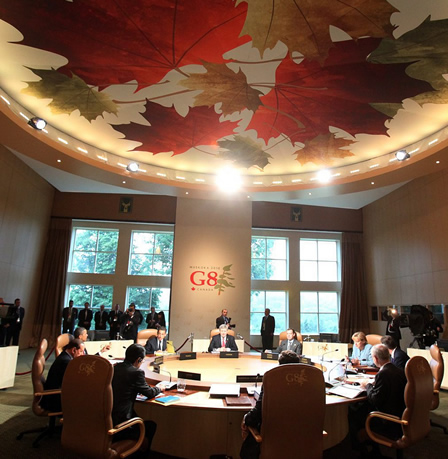
Photo: G-8 leaders gather around the table at the working session at the G-8 Summit in Huntsville, Ontario. (Photo © DFAIT Canada.)
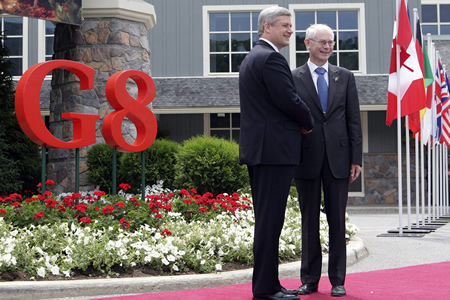
Photo: Canadian Prime Minister Stephen Harper welcomes Herman Van Rompuy, President of the European Council to the Muskoka G-8 Summit at the Deerhurst Resort in Huntsville, Ontario. (Photo © DFAIT Canada.)
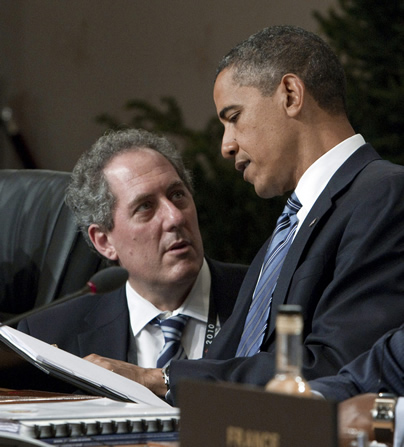
Photo: An aide talks to United States President Barack Obama at the leaders' working session at the G-8 Summit in Huntsville, Ontario. (Photo © DFAIT Canada.)
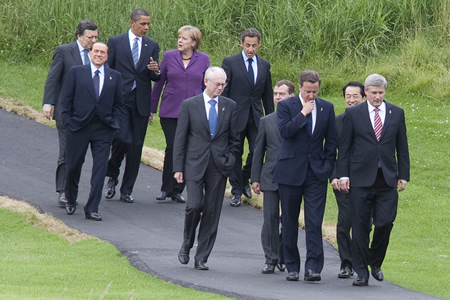
Photo: G-8 leaders walk down a path to pose for a leaders' group photo at the G-8 Summit in Huntsville, Ontario.
From the left:
• President of the European Commission: Jose Manuel Barroso,
• President of the Council of Ministers of the Republic of Italy: Silvio Berlusconi,
• President of the United States of America: Barack Obama,
• Chancellor of the Federal Republic of Germany: Dr. Angela Merkel,
• President of the European Council: Herman Van Rompuy,
• President of the French Republic: Nicolas Sarkozy,
• President of the Russian Federation: Dmitry Medvedev,
• Prime Minister of the United Kingdom: David Cameron,
• Prime Minister of Japan: Naoto Kan,
• Prime Minister of Canada: Stephen Harper.
(Photo © DFAIT Canada.)
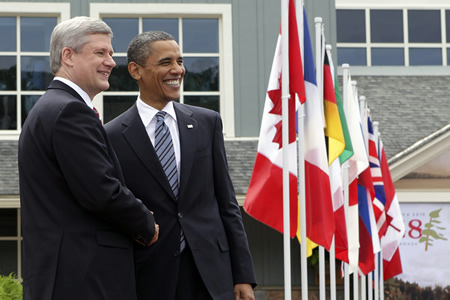
Photo: Canadian Prime Minister Stephen Harper welcomes United States President Barack Obama to the Muskoka G-8 Summit at the Deerhurst Resort in Huntsville, Ontario. (Photo © DFAIT Canada.)
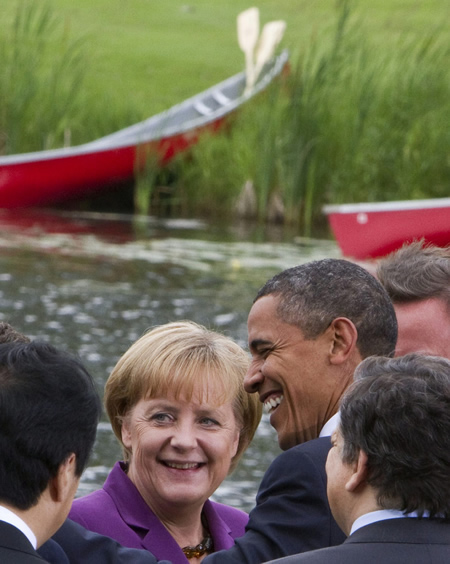
Photo: German Chancellor Angela Merkel and US President Barack Obama share a laugh as G-8 leaders pose for the leaders' group photo at the G-8 Summit in Huntsville, Ontario. (Photo © DFAIT Canada.)
• Canada hosted this year's G-8 summit on June 25-26 in Canada's Muskoka region.
The Group of Eight (G-8) brings together the world's major advanced economies--Canada, France, Germany, Italy, Japan, Russia, the United Kingdom and the United States.
The G-8 plays a leading role in international affairs. In partnership with the global community, it has helped establish concrete responses and gather significant resources to address critical global challenges in such areas as health, education and peace and security.
• G8 Summit 2010 Accountability Report: GET IT HERE
Source: Department of Foreign Affairs and International Trade, Government of Canada.
|GlobalGiants.Com|


Edited & Posted by the Editor | 5:31 AM | View the original post

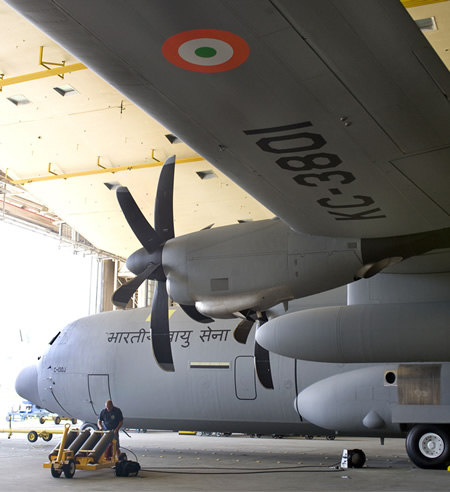
Photo: The first Lockheed Martin C-130J Super Hercules for India has completed painting at the company's Marietta, Georgia, facility. The aircraft now enters flight test in preparation for delivery at the end of the year. The program for India includes six C-130Js, training of aircrew and maintenance technicians, spare parts, ground support, and test equipment. Also included is India-unique operational equipment designed to increase Special Operations capabilities.
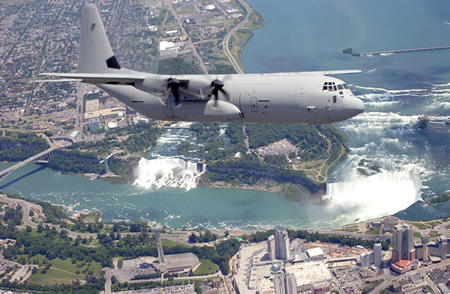
Photo: The Lockheed Martin C-130J Super Hercules airlifter pictured here flies over Niagara Falls on a test flight.
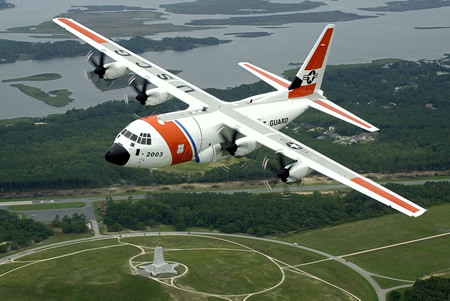
Photo: This aircraft is a Lockheed Martin C-130J, operated by the U.S. Coast Guard at Elizabeth City, N.C.
• Headquartered in Bethesda, Maryland, USA, Lockheed Martin is a global security company that employs about 136,000 people worldwide and is principally engaged in the research, design, development, manufacture, integration and sustainment of advanced technology systems, products and services.
Source: Lockheed Martin
|GlobalGiants.Com|
Edited & Posted by the Editor | 12:57 PM | View the original post


• According to a major new IBM survey of more than 1,500 Chief Executive Officers from 60 countries and 33 industries worldwide, chief executives believe that -- more than rigor, management discipline, integrity or even vision -- successfully navigating an increasing complex world will require creativity.
Conducted through in-person interviews with consultants from IBM's Institute for Business Value, less than half of global CEOs believe their enterprises are adequately prepared to handle a highly volatile, increasingly complex business environment.

• CEOs are confronted with massive shifts - new government regulations, changes in global economic power centers, accelerated industry transformation, growing volumes of data, rapidly evolving customer preferences - that, according to the study, can be overcome by instilling "creativity" throughout an organization.
• More than 60 percent of CEOs believe industry transformation is the top factor contributing to uncertainty, and the finding indicates a need to discover innovative ways of managing an organization's structure, finances, people and strategy.

Managing Complexity
The CEOs interviewed told IBM that today's business environment is volatile, uncertain and increasingly complex.
Eight in ten CEOs expect their environment to grow significantly more complex but only 49 percent believe their organizations are equipped to deal with it successfully - the largest leadership challenge identified in eight years of research.
The CEOs said that the complexity of an interconnected world is aggravated by a number of factors. For example, CEOs expect revenue from new sources to double over the next five years and 76 percent of CEOs foresee the shift of economic power to rapidly developing markets.
Over the last four studies, the expected impact of technology on organizations has risen from 6th to 2nd place in importance, revealing that CEOs understand that technology and the interconnection of the world's infrastructures is contributing to the complexity they face, and also reveals that they need more technology-based answers to succeed in a world that is massively interconnected.

One World, Diverging Views
Vast complexity is further intensified by regional differences. The study noted that perspectives varied with geography - differences of opinion about what changes to make, what new skills will be needed and how to succeed in the new economic environment. These regional variations also compound the complexities with which CEOs must contend.
China proved much more resilient than the developed nations during the economic downturn. So, CEOs in China are, understandably, less concerned about volatility than CEOs in other regions. In fact, they are becoming increasingly confident of their place on the world stage.
But if China is to fulfill its global aspirations, it will need a new generation of leaders with creativity, vision and international management experience. Many of the country's CEOs recognize this; 61 percent believe "global thinking" is a top leadership quality.

• In North America, which faced a financial crisis that led to governments becoming major stake-holders in private enterprise, CEOs are more wary of "big government" than CEOs elsewhere. A full 87 percent anticipate greater government intervention and regulation over the next five years, compounding their sense of uncertainty.
In Japan, 74 percent of CEOs expect the shift of economic power from mature to rapidly developing markets to have a major impact on their organizations. By contrast, the European Union is less concerned about this shift, with only 43 percent of CEOs expecting to be impacted.
Understanding these and other sharp differences emerging by region is increasingly important as economies and societies become more closely linked. Organizations confront these differences as they increasingly operate across boundaries and across different regions.

• This study is the fourth edition of IBM's biennial Global CEO Study series. To better understand the challenges and goals of today's CEOs, IBM consultants met face-to-face with the largest-known sample of these executives. Between September 2009 and January 2010, IBM interviewed 1,541 CEOs, general managers, and senior public sector leaders who represent different sizes of organizations in 60 countries and 33 industries.
Source: IBM
|GlobalGiants.Com|
"I have only one counsel for you -- Be Master."
-- Napoleon Bonaparte to his brother, King Joseph of Spain.
Edited & Posted by the Editor | 1:01 PM | View the original post

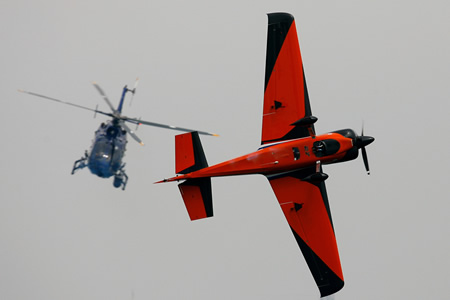
Photo: Nicolas Ivanoff of France in action on the Detroit River during the Red Bull Air Race Training day on June 3, 2010 in Windsor, Canada. (Photo by Dean Mouhtaropoulos/Getty Images for Red Bull Air Race. © 2010 Getty Images.)
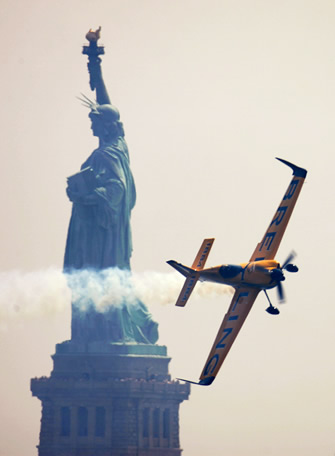
Photo: Nigel Lamb of Great Britain in action on the Hudson River during the Red Bull Air Race New York Race Day on June 20, 2010 in New Jersey. (Photo by Dean Mouhtaropoulos/Getty Images for Red Bull Air Race. © 2010 Getty Images.)
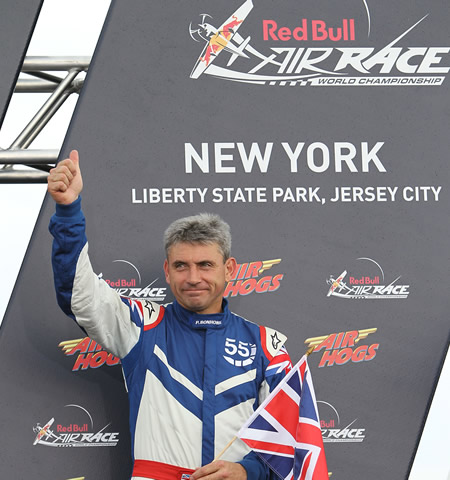
Photo: Paul Bonhomme of Great Britain celebrates his 1st Place after the Red Bull Air Race New York Race Day on June 20, 2010 in New Jersey. (Photo by Nick Laham/Getty Images for Red Bull Air Race. © 2010 Getty Images.)
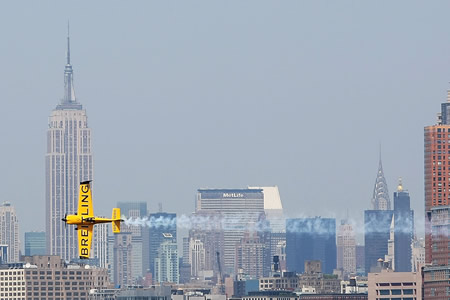
Photo: Nigel Lamb of Great Britain in action on the Hudson River during the Red Bull Air Race New York Qualifying Day on June 19, 2010 in New Jersey. (Photo by Nick Laham/Getty Images for Red Bull Air Race. © 2010 Getty Images.)
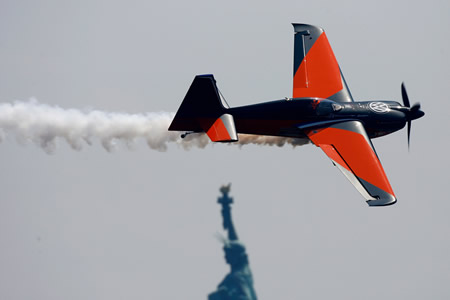
Photo: Nicolas Ivanoff of France in action on the Hudson River during the Red Bull Air Race New York Qualifying Day on June 19, 2010 in New Jersey. (Photo by Dean Mouhtaropoulos/Getty Images for Red Bull Air Race. © 2010 Getty Images.)
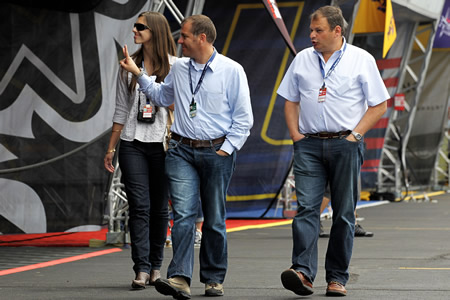
Photo: Adilson Kindlemann (C) of Brazil is pictured at the Race Airport during the Red Bull Air Race Calibration Day on June 16, 2010 in New Jersey. (Photo by Hamish Blair/Getty Images for Red Bull Air Race. © 2010 Getty Images.)
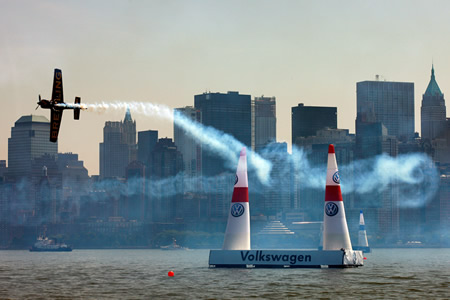
Photo: Nigel Lamb of Great Britain in action on the Hudson River during the Red Bull Air Race New York Training Day on June 18, 2010 in New Jersey. (Photo by Mark Thompson/Getty Images for Red Bull Air Race. © 2010 Getty Images.)
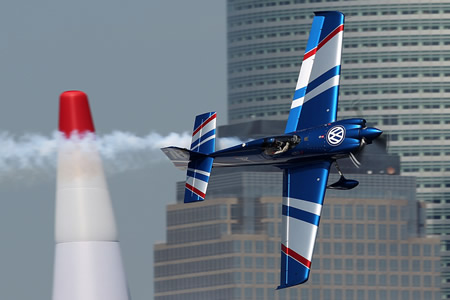
Photo: Sergey Rakhmanin of Russia in action on the Hudson River during the Red Bull Air Race New York Qualifying Day on June 19, 2010 in New Jersey. (Photo by Nick Laham/Getty Images for Red Bull Air Race. © 2010 Getty Images.)
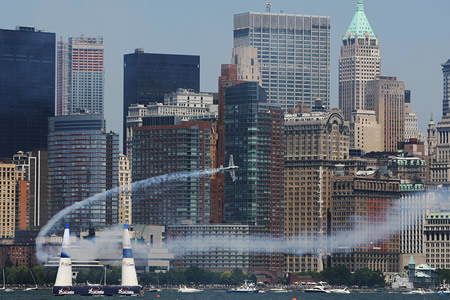
Photo: Hannes Arch of Austria in action on the Hudson River during the Red Bull Air Race New York Qualifying Day on June 19, 2010 in New Jersey. (Photo by Nick Laham/Getty Images for Red Bull Air Race. © 2010 Getty Images.)
• Paul Bonhomme of Britain won the first-ever Red Bull Air Race in New York on Sunday with a scintillating performance under pressure in front of the most spectacular setting in the eight-year history of the sport.
Nigel Lamb of Great Britain took second place in a thrilling four-way battle between the Statue of Liberty and Lower Manhattan while American Kirby Chambliss got his second straight podium with third place.
Bonhomme, the defending champion, prevailed in front of a huge crowd of 75,000 spectators watching from both sides of the Hudson River and a live U.S. television audience with one superb run after another through three pressure-packed rounds.
Bonhomme had finished behind Hannes Arch of Austria for the last three races and was desperate to get back on top after the Team Abu Dhabi racer cut his lead in the championship to just one point. Arch pushed Bonhomme to his limits but saw his three-race winning streak shattered in dramatic fashion when he hit a pylon in the final 4 ending any hope of a podium finish.
Bonhomme stopped the clock at 1:10.01, the day's fastest time on the 5.5-km track of 13 Air Gates set up on the majestic Hudson River between the Statue of Liberty and New York's breathtaking skyline.
Bonhomme had been the epitome of consistency with times of 1:10.09 in the Top 12 round and 1:10.07 in the Super 8 before lowering the mark again to 1:10.01 in the final. That was a full 2.05 seconds faster than Lamb and 2.08 faster than Chambliss of the USA. Hannes Arch of Austria was 5.34 back -- hurt by the six-second penalty for hitting the pylon.
It was Bonhomme's 12th straight podium, a record, and he now leads the championship with 53 points while Arch is second overall with 48 points. Team Breitling's Nigel Lamb is third on 47 and Chambliss has 35.
"It's very good, and what a setting," Bonhomme said. "I can appreciate the view now that I've finished racing. Great day. I concentrated on me, my airplane and the track. And now I think we can celebrate a bit." Lamb, who got his third second-place finish this year after getting the same result in Abu Dhabi and Rio de Janeiro, called it "a fantastic result". Chambliss, the 2006 world champion, was delighted to be on the podium in his home race. "As an American, I'm very, very proud," he said. "It'll sink-in in a while. I have to personally thank Hannes for hitting that gate. Thank you Hannes!"
Arch was gracious in defeat on the biggest stage in the 49-race history of the Red Bull Air Race, a city where organizers have dreamed of staging a race since the world's fastest growing motorsport was launched in 2003. It has been a FAI recognized world championship competition since 2005. Arch said he pulled out the stops to try to beat Bonhomme and get what would have been a record fourth straight victory and just barely hit the Air Gate, an inflatable pylon that he clipped with his wing.
"It was a good run," said Arch, the 2008 champion. "It was just a couple of centimeters that made the difference. I would rather lose here like that in style, going for it, than completely screw it up. So I think those guys in front of me owe me a beer."
The New York race was the fifth in the eight-race championship. It was a bit of a disappointment for the other American, Michael Goulian. The man from Massachusetts finished seventh. Pete McLeod of Canada, by contrast, had an excellent race and finished fifth to move up to fifth place in the championship with 29 points.
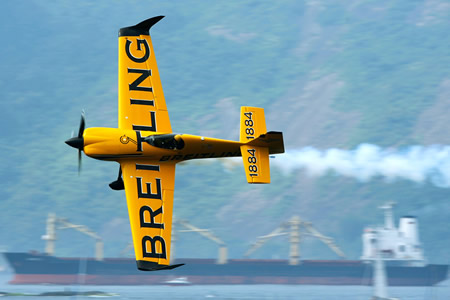
Photo: Nigel Lamb of Great Britain in action during the Red Bull Air Qualifying Day on May 8, 2010 in Rio de Janeiro, Brazil. (Photo by Dean Mouhtaropoulos/Getty Images for Red Bull Air Race. © 2010 Getty Images.)

Photo: Peter Besenyei of Hungary looks on at the Race Airport during the Red Bull Air Race Calibration Day on June 16, 2010 in New Jersey. (Photo by Mark Thompson/Getty Images for Red Bull Air Race. © 2010 Getty Images.)
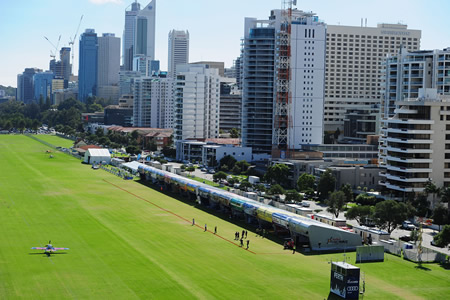
Photo: A general view of the Race Airport during the Red Bull Air Race Training Day Two on April 16, 2010 in Perth, Australia. (Photo by Mike Hewitt/Getty Images for Red Bull Air Race. © 2010 Getty Images.)
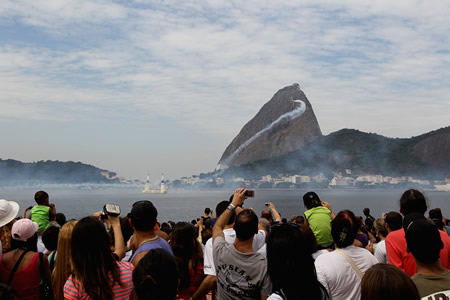
Photo: Fans on the beach watch Michael Goulian of USA in action during the Red Bull Air Qualifying Day on May 8, 2010 in Rio de Janeiro, Brazil. (Photo by Hamish Blair/Getty Images for Red Bull Air Race. © 2010 Getty Images.)
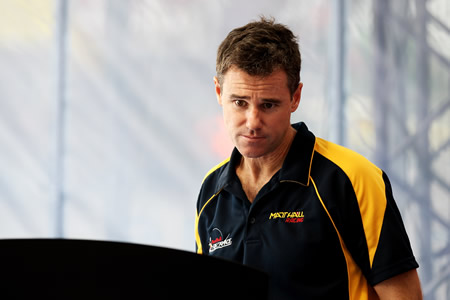
Photo: Matt Hall of Australia looks at a competitors plane at the Race Airport during the Red Bull Air Race Calibration Day on June 16, 2010 in New Jersey. (Photo by Mark Thompson/Getty Images for Red Bull Air Race. © 2010 Getty Images.)
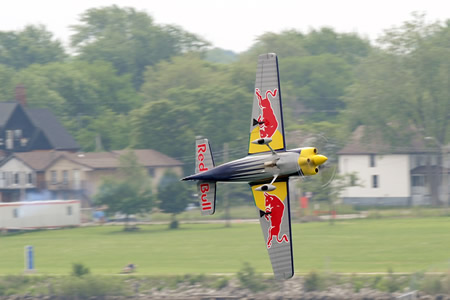
Photo: Peter Besenyei of Hungary in action on the Detroit River during the Red Bull Air Race Training day on June 3, 2010 in Windsor, Canada. (Photo by Harry How/Getty Images for Red Bull Air Race. © 2010 Getty Images.)
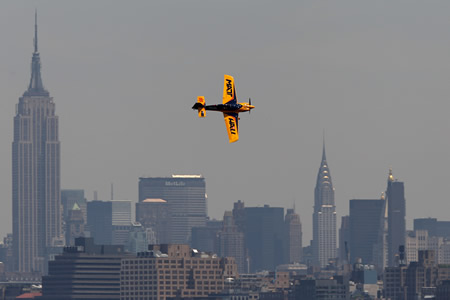
Photo: Matt Hall of Australia in action on the Hudson River during the Red Bull Air Race New York Training Day on June 18, 2010 in New Jersey. (Photo by Mark Thompson/Getty Images for Red Bull Air Race. © 2010 Getty Images.)
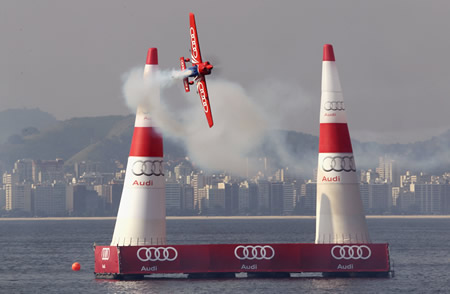
Photo: Matthias Dolderer of Germany in action during the Red Bull Air Race Training Day on May 6, 2010 in Rio de Janeiro, Brazil. (Photo by Ezra Shaw/Getty Images for Red Bull Air Race. © 2010 Getty Images.)
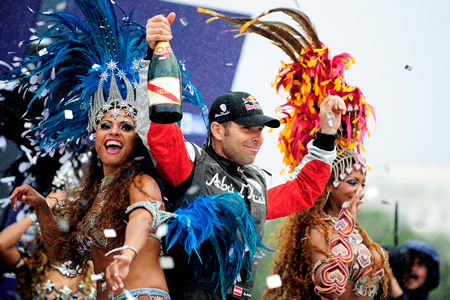
Photo: Hannes Arch of Austria celebrates his victory in the Red Bull Air Race Day on May 9, 2010 in Rio de Janeiro, Brazil. (Photo by Jamie McDonald/Getty Images for Red Bull Air Race. © 2010 Getty Images.)
• Just five years since it was officially launched, the Red Bull Air Race World Championship has evolved to become the most exhilarating motor sport on the planet. A combination of agility, high speed and extreme maneuverability, the low altitude competition demands exceptional flying skill from the world's most talented pilots.
8 races will take place on 5 continents in 2010.
RED BULL AIR RACE WORLD CHAMPIONSHIP - RACE CALENDAR 2010
1. 26/27 March Abu Dhabi, UAE
2. 17/18 April Perth, Australia
3. 8/9 May Rio de Janeiro, Brazil
4. 5/6 June Windsor, Canada
5. 19/20 June New York, USA
6.7/8 August EuroSpeedway, Lausitz, Germany
7. 19/20 August Budapest, Hungary
8. 4/5 September Lisbon, Portugal
|GlobalGiants.Com|
Edited & Posted by the Editor | 5:07 AM | View the original post
• World Less Peaceful in 2010.
• Violence Impacting Global Economy $7 Trillion Annually.
• New Zealand tops rankings for second consecutive year.
• 4-year trends show Middle East and Africa with most gains in peacefulness.
• South Asia sees sharpest fall in peace.
• Military spending as a % of GDP reaches its lowest point in 4 years.

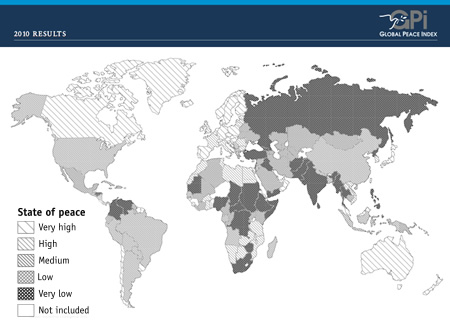
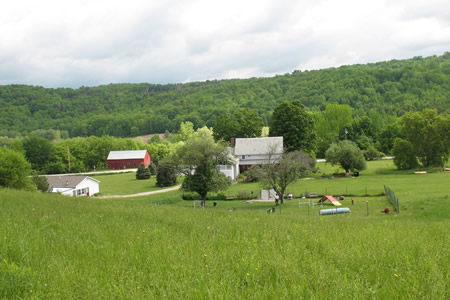
The world became less peaceful for the second consecutive year, according to the just published fourth annual Global Peace Index (GPI). As the global economy continues to falter, this year's data shows an intensification of conflicts and growing instability linked to the downturn that began in 2008, with several countries seeing sharp increases in homicides, violent demonstrations and fear of crime.
The increase in violence is depriving the global economy of assets when they are needed most. A 25 percent reduction in global violence would free up $1.8 trillion USD annually -- enough to pay off Greece's debt, fund the achievement of the Millennium Development Goals (MDGs) and meet the EU's 20-20-20 climate and energy targets.

The only study to quantify global peacefulness, the GPI is produced by the Institute for Economics and Peace (IEP). This year it has expanded to rank 149 independent states. Composed of 23 qualitative and quantitative indicators, it combines internal and external factors ranging from military expenditure to relations with neighboring countries and levels of violent crime.
• Global Peace Index (GPI) 2010: Rankings for 149 Countries
"The research carried out by the IEP based on 4 years of GPI data provides a quantifiable demonstration that improving peace can transform the global economy and unleash the wealth needed to tackle debt, fund economic expansion and create a more sustainable environment," said Steve Killelea, founder of the GPI.
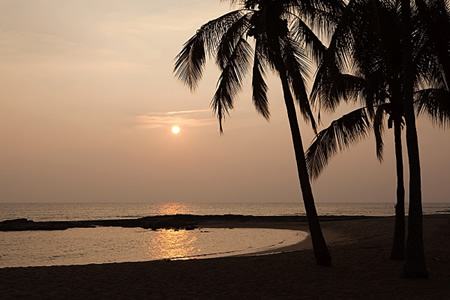
Top-ranked New Zealand was one of only three countries in the top ten to improve in peacefulness in the 2010 Index. Iceland moved into the #2 spot as the country's economy stabilised after falling to #4 in last year's ranking, the improvement demonstrating the resilience of peaceful nations.
Despite the global slide, the Middle East & North Africa and Sub-Saharan Africa have made the most gains since the research began in 2007. Reasons for the improvement vary, but include more political stability and a drop in military expenditure in the Middle East & North Africa and less access to weapons, a decrease in conflicts and better relations with neighboring countries in Sub-Saharan Africa.

Conversely, South Asia saw the greatest decrease in peacefulness, as a result of increased involvement in internal conflicts. The main countries experiencing decreases in peacefulness were India, Sri Lanka and Pakistan.
The US improved its 2010 score but slipped three spots down the index due to the addition of new countries and the re-rating of the number of heavy weapons.
Western Europe continues to be the most peaceful region, with the majority of the countries ranking in the top 20. All five Scandinavian nations rank in the top ten; however, Denmark dropped five spots to #7.
Iraq, Somalia and Afghanistan were the least peaceful countries for the second consecutive year. Syria, Georgia, the Philippines, Russia and Cyprus were this year's biggest fallers.

• The GPI was founded by Killelea, an Australian international technology entrepreneur and philanthropist. It forms part of the Institute for Economics and Peace, a global think tank dedicated to the research and education of the relationship between economics, business and peace. An international panel of experts in the study of peace advises on the identification and weighting of indicators in the GPI, which is compiled by the Economist Intelligence Unit.
Source: Institute for Economics and Peace
|GlobalGiants.Com|
"These six things doth the LORD hate: yea, seven are an abomination unto him:
A proud look, a lying tongue, and hands that shed innocent blood,
A heart that deviseth wicked imaginations, feet that be swift in running to mischief,
A false witness that speaketh lies, and he that soweth discord among brethren."
-- Proverbs of Solomon 6:16-19.
"There be three things which go well, yea, four are comely in going:
A lion which is strongest among beasts, and turneth not away for any;
A greyhound; A he-goat also;
And a king, against whom there is no rising up."
-- Proverbs of Solomon 30:29-31.
[A lion marches on and does not alter his pace or quit his path when other animals come in his way. A greyhound (fastest hunting dog) remains ready for his course and performs it with swiftness. A he-goat walks in front of the flock, as one careful about it, and attentive to its safety. And a king goes gracefully when he reigns in the hearts of his people, and commands a unanimous, victorious army (visible or invisible), whom none dare oppose.]
Edited & Posted by the Editor | 2:23 AM | View the original post
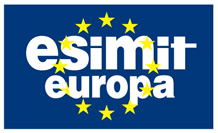
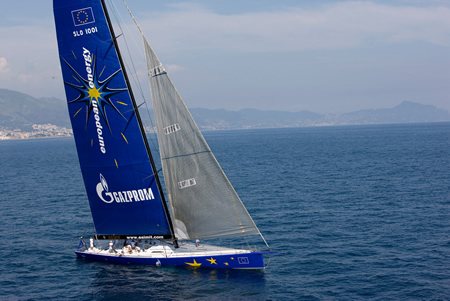
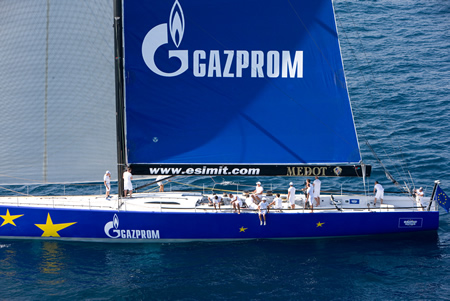
CANNES, FRANCE: The highly anticipated Esimit Europa 2 yacht has been introduced to the global audience at its christening ceremony, which was attended by numerous business leaders and project supporters.
• The 30-meter long and 44-meter high giant is the fastest yacht in the world.
Under the patronage of Jose Manuel Barroso, the President of the European Commission, the yacht is building upon its 15-year tradition of connecting European nations.
Speaking at the launch ceremony, Slovenian Igor Simcic, the yacht's owner and Esimit Europa project General Manager, outlined the team's goals, which will compete in the 5 most prestigious European regattas as an ambassador of the European Energy movement.
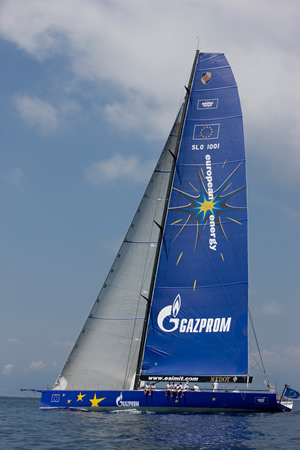
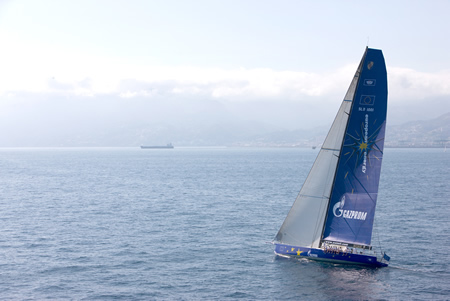
The 26-member crew will man one of world's most advanced yachts. The plan is to achieve an overall victory in all attended regattas. "Nothing in the Esimit Europa project is left to coincidence. Representing the entire Europe is a great honor and a great responsibility. I am glad that the yacht has become a symbol for the united Europe, a symbol that is sorely lacking. Each victory will therefore strengthen the pride in being a European and we will not be ashamed to raise the European flag as we cross the finish line," briefly explained Igor Simcic.
Source: Esimit Europa
|GlobalGiants.Com|
Edited & Posted by the Editor | 1:23 AM | View the original post

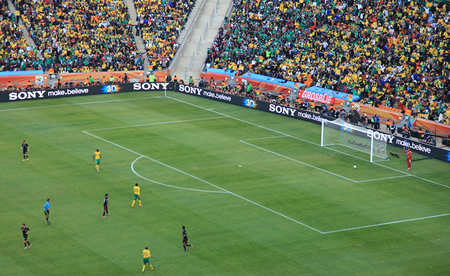
Photo: General view during the 2010 FIFA World Cup South Africa Group A match between South Africa and Mexico at Soccer City Stadium on June 11, 2010 in Johannesburg, South Africa. (Photo by David Cannon/Getty Images for Sony. © 2010 Getty Images)
• Brazilians Would pay Most for World Cup Title
Brazilians would be willing to pay more than 800 euros each in exchange for the World Cup football title. Together with the Portuguese (368 euros), they would be prepared to dig deepest into their pockets in exchange for the World Cup glory. At 47 euros a head the Dutch are more frugal, but still more generous than the Germans or Japanese. Brazilians are also the most optimistic about their chances, with nearly three out of four people surveyed believing the 'divine canaries' will take the title. Other countries also see Brazil as hot favourites, with only the Argentineans and the Spaniards believing they have a better chance of winning than the Brazilians. To support their national teams, consumers will be buying masses of fan gear over the next few weeks. On average the French and English will spend 15 euros each, with the Spanish buying more than 27 euros worth of gear and souvenirs. These are some of the findings of a comprehensive study by ING into the correlation between the World Cup and the economy.

Photo: Steven Pienaar of South Africa and Gerardo Torrado of Mexico compete for the ball during the 2010 FIFA World Cup South Africa Group A match between South Africa and Mexico at Soccer City Stadium on June 11, 2010 in Johannesburg, South Africa. (Photo by Clive Mason/Getty Images for Sony. © 2010 Getty Images)
• Impact of the World Cup on the economy
As the main sponsor of the Dutch national squad, ING is launching various initiatives in connection with the World Cup. One of these is the 'ING WK-nomie' (ING World Cup-onomics) study. Charles Kalshoven, chief economist at the ING Economic Bureau Retail Netherlands: "The further the Dutch go, the better it will be for the Dutch economy. A similar effect can be seen in other participating countries. The impact of the World Cup can be felt in the workplace and in shops, but also in consumer confidence and spending."

Photo: Giovani Dos Santos of Mexico controls the ball during the 2010 FIFA World Cup South Africa Group A match between South Africa and Mexico at Soccer City Stadium on June 11, 2010 in Johannesburg, South Africa. (Photo by Michael Steele/Getty Images for Sony. © 2010 Getty Images)
• Sacrificing days off to win the World Cup
In the Netherlands one in every five people would be prepared to give up more than a full working week in days off in exchange for winning the World Cup. As with putting a price tag on winning the World Cup, most other countries are more generous in this respect. In Brazil and Argentina, 72% and 79% of the population, respectively, would be willing to sacrifice days off. On average they would gladly lose three full working weeks of holidays in exchange for winning the title. In contrast, the Japanese and Americans would be less prepared to give up their days off.
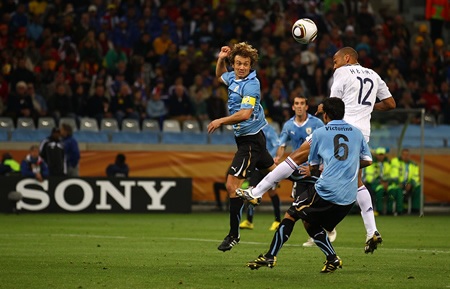
Photo: Thierry Henry (R) of France takes a shot at goal during the 2010 FIFA World Cup South Africa Group A match between Uruguay and France at Green Point Stadium on June 11, 2010 in Cape Town, South Africa. (Photo by Lars Baron/Getty Images for Sony. © 2010 Getty Images)
• Anglo countries watch fewer World Cup games
Enthusiasm for the World Cup differs from country to country. For example, 58% of Americans say they will not be watching any World Cup games. Remarkably, a large percentage of people in other English-speaking countries - England (42%), Australia (43%) - will not be watching games either. Many fans in Mexico and Portugal watch the games in bars (28% and 26%, respectively), whereas Portuguese people prefer watching the games at home and Brazilians get together with family and friends.
To underpin their support for their national teams, people are stocking up on fan gear. On average the Dutch are spending 5 euros while the French and English are buying 15 euros worth of gear per person. The Spanish are spending even more: on average 27 euros each.
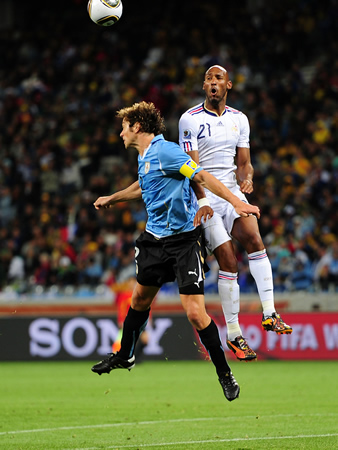
Photo: Nicolas Anelka of France and Diego Lugano of Uruguay compete for the ball during the 2010 FIFA World Cup South Africa Group A match between Uruguay and France at Green Point Stadium on June 11, 2010 in Cape Town, South Africa. (Photo by Jamie McDonald/Getty Images for Sony. © 2010 Getty Images)
• Social significance of football
The way that people experience the World Cup and the value they attach to winning it appear to be linked to the social significance a country attaches to football. ING asked people in 12 participating countries which career they would ideally choose for their sons. Brazilians (39%) and Argentineans (32%) dream most of a professional football career for their sons, followed by Spaniards and Mexicans (both 29%). This preference was the weakest in Germany and Japan at a mere 7%. The Dutch would most like to see their sons become company executives (61%), with a professional football career in third place (13%) - still well ahead of a career as a movie star (4%) or Prime Minister (only 2%).

Photo: Singer Shakira poses for photographs during Sony World Cup Opening 3D Launch Show at Nelson Mandela Square on June 8, 2010 in Johannesburg, South Africa (Photo by Jim Dyson/Getty Images for Sony. © 2010 Getty Images).
• Brazilians and Spaniards most confident about own chances
Brazilians are most confident about their own team with nearly three-quarters of the people surveyed expecting the 'divine canaries' to take the cup home. Brazil are also hot favourites with people surveyed in other countries. Only Argentina and Spain believe they have a better chance of winning than Brazil.
On average, Spaniards give themselves a 58% chance of taking the cup home. Argentineans also have faith in their national squad and think they have a 48% chance of winning for the first time since 1986. The Dutch give their squad a 34% chance of success. Remarkably the Mexicans have more faith in the Dutch team than the Dutch do, while Italians are least convinced that the Dutch will hoist the trophy.
• ING is a global financial institution of Dutch origin with more than 85 million customers in Europe, the US, Canada, Latin-America, Asia and Australia. ING Bank N.V. is headquartered in Amsterdam, The Netherlands.
Source: ING
• The Castrol Predictor: Who will win the World Cup?
(Two of the world's most passionate footballing nations, Spain and Brazil, are favorites to go head to head in the 2010 FIFA World Cup(TM) Final according to the Castrol Predictor, a new tool launched by 2010 FIFA World Cup(TM) sponsor Castrol. The Castrol Predictor, uses objective analysis and highly advanced technology to offer unique insights into winning performances.)
|GlobalGiants.Com|
Edited & Posted by the Editor | 3:56 AM | View the original post

Photo: An Anders Zorn painting that sold for 2.6 million euros excluding commission.
26,000,000 SEK excluding commissions (2,600,000 euros) was paid for the masterpiece Sommarnoje by the Swedish artist Anders Zorn at Stockholms Auktionsverk in Stockholm. This is a world record for a Swedish artist and the highest price ever paid at an auction in Sweden.
This watercolour was painted in 1886 at Dalaro.
• Anders Zorn is considered one of the world's foremost watercolor painters and his skills depicting the variations and reflections of the water's surface are unsurpassed in this very difficult technique.
Source: Stockholms Auktionsverk
|GlobalGiants.Com|
Edited & Posted by the Editor | 12:48 AM | View the original post
• Winner: India.
• Top environmental gala televised worldwide from Rwanda.

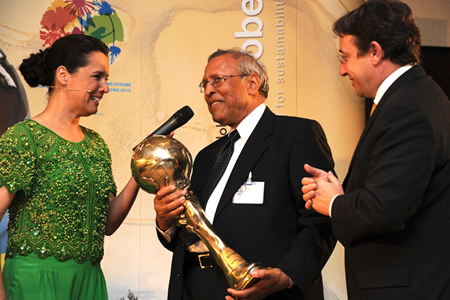
Photo: Moderator: Desirée Nosbusch, Winner Bhagwati Prasad Agrawal, Award Presenter: UNEP Executive Director Achim Steiner.
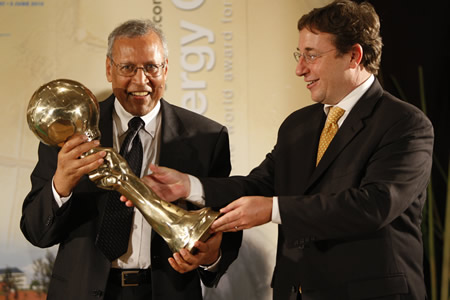
Photo: Winner Bhagwati Prasad Agrawal, Award Presenter: UNEP Executive Director Achim Steiner.
Top-ranking UN VIPs, famous environmental champions, a glamorous gala, and, above all, the world's best environmental projects comprised the ENERGY GLOBE Gala Rwanda 2010. This year the top environmental gala served as the official opening event for the UN World Environment Day.
Before a full house, environmental VIPs delivered the introductions: top Rwandan politicians, UNEP Executive Director Achim Steiner, UNEP climate hero Luo Hong, Peter Rae (vice president of the environmental initiative REN21) and Ian Redmond (patron of the Great Apes Survival Project).
As the winner of the ENERGY GLOBE in the category Water was announced, emotions began to rise in the hall: Rejoicing erupted among the team of a project from India, "River from Heaven", which works to supply water to rural areas. Then everything went quickly at the Awards: The ENERGY GLOBE in the category Earth went to Mauritius, where "Seeds of Hope" achieves reforestation and biodiversity. The award for the category Fire distinguished floating power plants in Norway. In the category Air, a CO2 saving engine from Taiwan took the prize. The Youth winner was a school self-sufficiency concept from Argentina that provides healthy nutrition for pupils and teaches them cultivation.
The ENERGY GLOBE World Award goes to ...
The climax was the selection of the ENERGY GLOBE World Award by the audience. Moderator Desirée Nosbusch talked with UNEP Executive Director Achim Steiner, the award presenter, about World Environment Day. Meanwhile in the background the audience votes were being counted. Then finally came the announcement: With a clear margin, the victory went to the winner of the Water Award, India!
However, the nominees were not the only excitement: During the Gala and at the after-show concert, pop and chanson diva Viktor Lazlo delivered samba flair. Inganzo Ngali, Rwanda's best-known folklore group, added local color to the Gala.
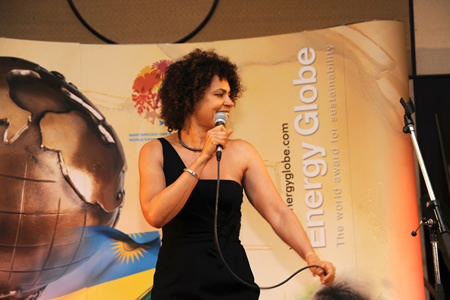
Photo: Viktor Lazlo performing at the gala.
• The impressive and committed projects that received the awards ensured that this high-class gala did not lose sight of its actual purpose. These projects made the glamorous festival a highly visible signal for sustainability and environmental awareness.
• The ENERGY GLOBE World Award is an annual event honoring top environmental projects from around the world. It was established in 2000 by Wolfgang Neumann from Austria and has become the most prestigious international environmental prize. Every year approximately 1000 projects are submitted by over 100 countries for the prize, which is awarded in the categories earth, fire, water, air and youth.
The nominees:
Category Earth:
• Federated States of Micronesia: On the island of Korae, Micronesia Eco Inc. has established a recycling system that conserves resources and generates income for inhabitants.
• Mauritius: The seedling program of Flora Marketing CO LTD offers residents new sources of income while ensuring biodiversity and combating massive deforestation.
• Austria: Meeting the German passive house standard with the renovation of an energy-hungry old apartment building was a challenge. A special solar façade enabled GIWOG to succeed.
Category Fire:
• Bangladesh: Shobuj Angira Foundation supplies portable solar energy in rural Bangladesh. Centrally located solar panels and portable batteries now bring light to villagers.
• Nepal: The improved water mills of the Centre for Rural Technology not only make work easier; they also deliver urgently needed, clean power in rural Nepal.
• Norway: Statoil ASA New Energy has constructed a prototype of a floating wind power plant. Now wind energy can also be harvested on the open sea.
Category Water:
• India: Networked underground rain water tanks supplied by Sustainable Innovations already provide 10,000 residents of rural India with clean drinking water.
• Pakistan: The extensive water and hygiene program of Aga Khan Planning and Building Service delivers water supply systems and health training to Pakistani villages.
• Germany: HelioTech Türk GmbH has implemented an economical desalination plant that uses solar energy to make salt water drinkable and works even in remote areas.
Category Air:
• Taiwan: Less CO2 through more efficient engines was the idea behind Epoch Energy Technology Corp.'s Hybrid Fuel System. It can be retrofitted into any engine and produces a hydrogen/oxygen mixture as additional fuel.
• USA: The city of Ann Arbor, Michigan, has saved money and energy since transforming its street lighting to LEDs. This perfectly combines economy and CO2 reduction.
• Sweden: The Malmö Environment Department supports public photovoltaic projects and so advertises for CO2-free energy production.
Category Youth:
• Argentina: The self-sufficiency program of CiudadanÃa Solidaria provides healthy nourishment at the school in La Soledad while teaching pupils and teachers about sustainable organic farming.
• Slovenia: The project "Ustanova Ekosola kot nacin zivljenja" lets pupils in the school center in Velnje test how energy saving works. This prototype is affecting all of Slovenia.
• Morocco: Under the motto "Ecology live", the Mohammed VEX Foundation for Environment Protection supports schools toward becoming eco-schools.
Source: Energy Globe Foundation
|GlobalGiants.Com|
Edited & Posted by the Editor | 11:21 AM | View the original post
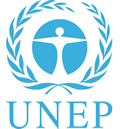
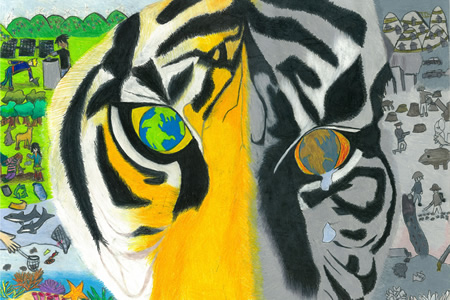
Photo: Sylvia Gong, an eighth grader at Hopkins Junior High School in Fremont, California, won the United Nations Environment Programme's (UNEP) International Children's Painting Competition (ICPC) in North America. Gong's painting portrays a tiger grieving over a world where human activities are depleting resources.
• Sylvia Gong, an eighth grader at Hopkins Junior High School in Fremont, California, received the top North American prize in the United Nations Environment Programme's (UNEP) 19th annual International Children's Painting Competition (ICPC). Her painting addresses the theme, "Biodiversity - Connecting with Nature."
Gong was honored at the Children's Museum of Pittsburgh as Bayer Corporation and UNEP unveiled the 2010 ICPC Exhibition to herald World Environment Day celebrations in Pittsburgh, this year's North American host city. The 77-picture exhibition features the three winning paintings, including Gong's portrayal of a tiger grieving over a world where human activities are depleting resources.
Her first place award included a $1,000 cash prize and an all-expense paid trip for her and a chaperone to UNEP's TUNZA International Children's Conference in Nagoya, Japan, in October. While there, she will join the first place winners from UNEP's six global regions. This year, nearly 1.1 million paintings from 88 countries were received.

The ICPC is a signature event of UNEP's annual World Environment Day celebrations. The painting competition is sponsored globally by Bayer AG, an international health care, nutrition and high-tech materials group headquartered in Germany.
Established in 1991 and organized annually by partners UNEP, Bayer AG, Nikon and the Foundation for Global Peace and the Environment, the ICPC invites elementary and middle school students, ages six to 14, to learn about the environment and express that knowledge creatively through art.
Regional winners are selected from UNEP's six regions including North America; Africa; Asia and the Pacific; West Asia; Latin America and the Caribbean; and Europe. They are announced during the six-week period between Earth Day in April and World Environment Day on June 5.
|GlobalGiants.Com|
Edited & Posted by the Editor | 11:26 AM | View the original post

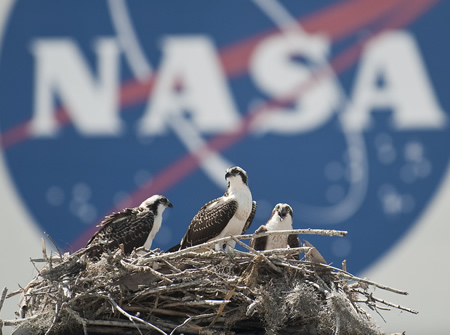
Photo: A family of Osprey are seen outside the NASA Kennedy Space Center Vehicle Assembly Building (VAB) in Cape Canaveral, Fla. on Thursday, May 13, 2010. Photo Credit: (NASA/Bill Ingalls)
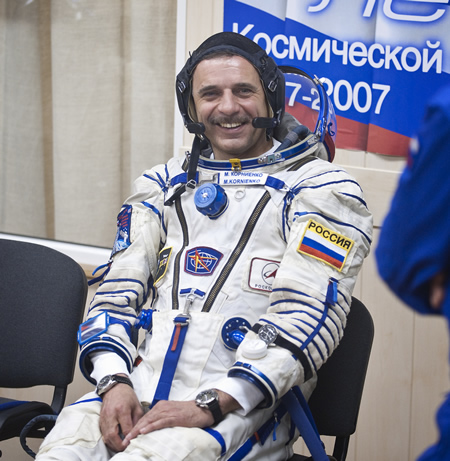
Photo: Russian cosmonaut Expedition 23 Flight Engineer Mikhail Kornienko smiles as he awaits to have his Sokol suit pressure checked prior to launch, Friday, April 2, 2010, in Baikonur, Kazakhstan. Kornienko and fellow Expedition 23 crew members Soyuz Commander Alexander Skvortsov and NASA Flight Engineer Tracy Caldwell Dyson launched in their Soyuz TMA-18 rocket from the Baikonur Cosmodrome in Kazakhstan on Friday, April 2, 2010. Photo Credit: (NASA/Bill Ingalls)
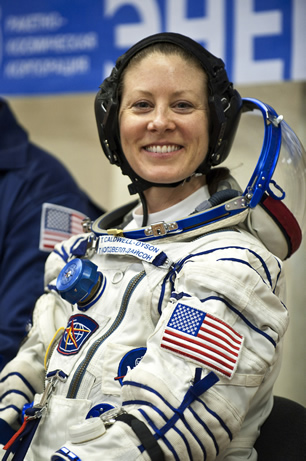
Photo: Expedition 23 NASA Flight Engineer Tracy Caldwell Dyson of the U.S. prepares to have her Russian Sokol suit pressure checked at the Baikonur Cosmodrome in Baikonur, Kazakhstan, Friday, April 2, 2010. Caldwell Dyson and fellow Expedition 23 crewmembers Soyuz Commander Alexander Skvortsov and Flight Engineer Mikhail Kornienko of Russia launched in their Soyuz TMA-18 rocket from the Baikonur Cosmodrome in Kazakhstan on Friday, April 2, 2010. Photo Credit: (NASA/Carla Cioffi)
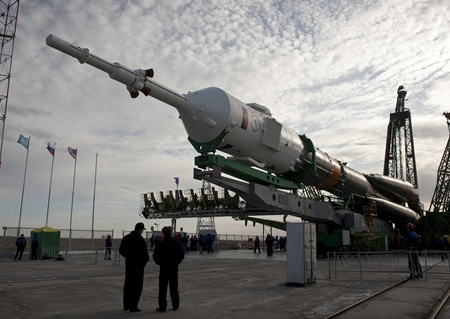
Photo: The Soyuz TMA-18 spacecraft is rolled out by train to the launch pad at the Baikonur Cosmodrome, Kazakhstan, Wednesday, March, 31, 2010. Photo Credit: (NASA/Carla Cioffi)
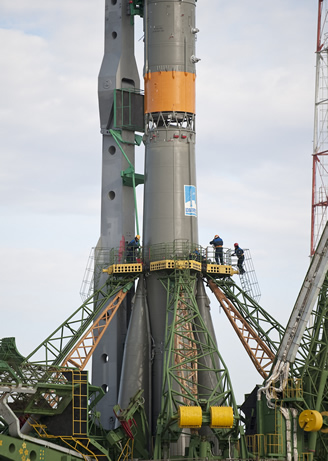
Photo: Pad technicians secure the Soyuz TMA-18 spacecraft shortly after it was rolled out by train to the launch pad at the Baikonur Cosmodrome, Kazakhstan, Wednesday, March, 31, 2010. Photo Credit (NASA/Bill Ingalls)
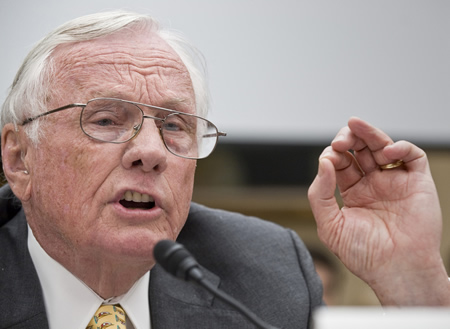
Photo: Apollo 11 Commander Neil Armstrong (first person to set foot on the Moon) makes a point as he testifies during a hearing before the House Science and Technology Committee, Tuesday, May 26, 2010, at the Rayburn House office building on Capitol Hill in Washington. The hearing was to review proposed human spaceflight plan by NASA. Photo Credit: (NASA/Paul E. Alers)
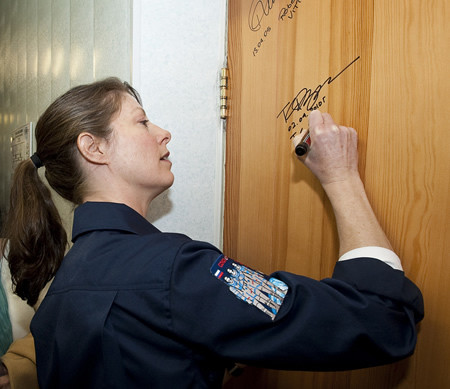
Photo: Expedition 23 Flight Engineer Tracy Caldwell Dyson performs the traditional door signing Friday, April 2, 2010 at the Cosmonaut Hotel in Baikonur, Kazakhstan. Caldwell Dyson was launched onboard the Soyuz rocket later that day with Expedition 23 Soyuz Commander Alexander Skvortsov and Flight Engineer Mikhail Kornienko on a mission to the International Space Station (ISS). Photo Credit: (NASA/Carla Cioffi)
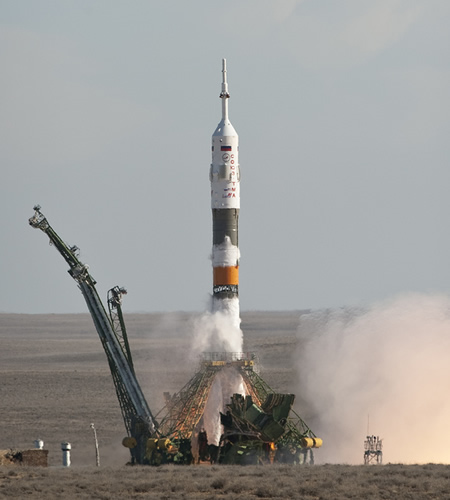
Photo: The Soyuz TMA-18 rocket launches from the Baikonur Cosmodrome in Kazakhstan on Friday, April 2, 2010 carrying Expedition 23 Soyuz Commander Alexander Skvortsov of Russia, Flight Engineer Mikhail Kornienko of Russia and NASA Flight Engineer Tracy Caldwell Dyson of the U.S. to the International Space Station. (Photo Credit: NASA/Carla Cioffi)
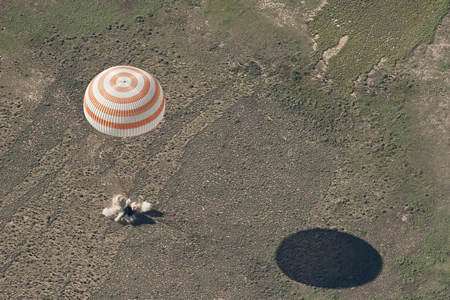
Photo: The Soyuz TMA-17 spacecraft is seen as it lands with Expedition 23 Commander Oleg Kotov and Flight Engineers T.J. Creamer and Soichi Noguchi near the town of Zhezkazgan, Kazakhstan on June 1, 2010. NASA Astronaut Creamer, Russian Cosmonaut Kotov and Japanese Astronaut Noguchi are returning from six months onboard the International Space Station where they served as members of the Expedition 22 and 23 crews. Photo Credit: (NASA/Bill Ingalls)
Expedition 23 Commander Oleg Kotov and Flight Engineers T.J. Creamer and Soichi Noguchi landed their Soyuz-17 spacecraft in Kazakhstan Tuesday, June 1, wrapping up a five-and-a-half-month stay aboard the International Space Station.
Kotov, the Soyuz commander, was at the controls of the spacecraft as it undocked from the aft port on the station's Zvezda module. The crew landed on June 1 at 11:25 p.m., east of Dzhezkazgan, Kazakhstan.
Russian recovery teams were on hand to help the crew exit the Soyuz vehicle and adjust to gravity after 163 days in space. Kotov will return to the Gagarin Cosmonaut Training Center in Star City, outside of Moscow. NASA astronaut Creamer and Japan Aerospace Exploration Agency astronaut Noguchi will return to Houston.
The trio launched aboard the Soyuz TMA-17 spacecraft from the Baikonur Cosmodrome in Kazakhstan on Dec. 21, 2009. As members of the Expedition 22 and 23 crews, they spent 161 days on the station. They supported three space shuttle missions that delivered the U.S. Tranquility module and its cupola; put the finishing touches on U.S. laboratory research facilities; and attached the Russian Rassvet laboratory and storage module.
Kotov has logged 360 total days in space on his two missions, and Creamer has 163 days. Noguchi, who also flew on the STS-114 shuttle mission, has compiled 177 days in space.
A new trio of Expedition 24 flight engineers, Douglas Wheelock, Shannon Walker and Fyodor Yurchickhin, will launch from the Baikonur Cosmodrome at 4:35 p.m. on June 15.
Source: NASA
|GlobalGiants.Com|
Edited & Posted by the Editor | 4:00 AM | View the original post
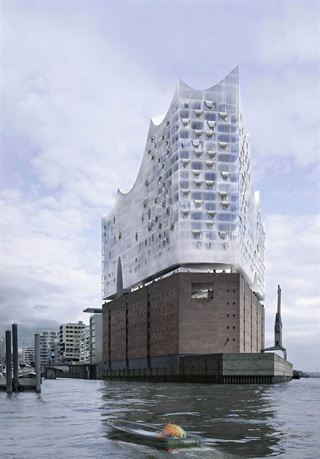
Photo: Elbphilharmonie -- Hamburg's New Landmark: During a Roofing ceremony on May 28 & 29, the northern German metropolis Hamburg presents with the "Elbphilharmonie" its new concert house to the public. More than 5,000 guests gain an insight into the making of this unique concert house. Designed by Swiss architects Herzog & de Meuron, this magnificent building is to become Hamburg's new landmark. (Foto © Hamburg Marketing GmbH).

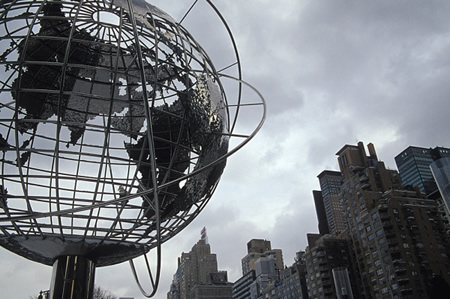
IBM has announced CityOne, a new "serious game" that can help customers, business partners and students discover how to make cities and their industries smarter by solving real-world business, environmental and logistical problems.
Based on decades of experience in solving business challenges in creative ways, IBM's "serious" games are designed to train the workforce of tomorrow.
With an estimated one million people around the world moving into cities each week, experts predict the population in the world's cities will double by 2050. Today cities consume an estimated 75 percent of the world's energy, emit more than 80 percent of greenhouse gases, and lose as much as 20 percent of their water supply due to infrastructure leaks. As their urban populations continue to grow, and these metrics increase, civic leaders will face an unprecedented series of challenges as they modify their infrastructures to meet these challenges.
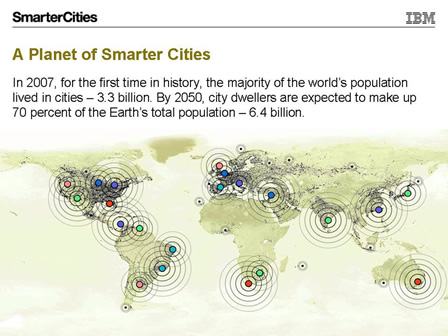
• For urban centers to sustain growth and play a positive and central role in the global economy, cities must grow smart.
With CityOne, IBM is providing a virtual environment that will help tomorrow's leaders learn how to apply advances in technology and better understand how these systems work.

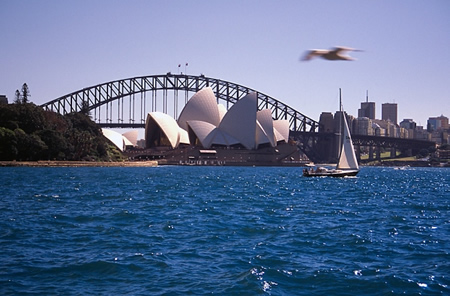
• According to IBM, CityOne will be a no charge, "sim-style" game in which the player is tasked with guiding the city through a series of missions that include the Energy, Water, Banking and Retail industries.
For example, one mission involves a city where water usage has increased at twice the rate of population growth. Supplies are becoming strained, the municipality is losing as much as 40 percent of its water supply through leaky infrastructure, and energy costs are steadily increasing. The player would be challenged to institute a Water Management System that would include accurate real-time data to make decisions on delivering the highest water quality most economically.


Players who promote a more customer-centric business model to the banks represented in their city will discover how mobile payments, dynamic invoicing, and micro-lending can impact business goals. In all of the missions described in the game, the player will need to determine the best way to invest to meet the financial, environmental, and sociological goals of the city's industries while balancing their budgets and the needs of the citizenry. In parallel, players will learn how the components of service reuse, process management, cloud, and collaborative technologies make business models more agile.
"Serious games allow professionals to inherently comprehend system interactions, and accurately model the potential business outcomes that can result, in a way that no other medium can do," said Nancy Pearson of IBM. "CityOne will simulate the challenges faced in a variety of industries so that businesses can explore a variety of solutions and explore the business impact before committing resources."
Source: IBM
|GlobalGiants.Com|
Edited & Posted by the Editor | 12:46 AM | View the original post

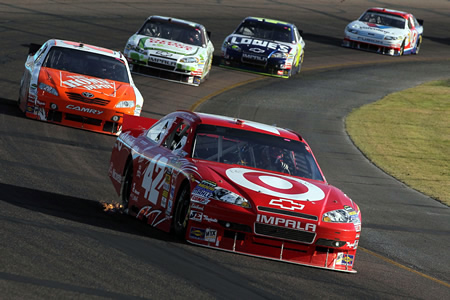
Photo: Juan Pablo Montoya, driver of the #42 Target Chevrolet, drives ahead of Joey Logano, driver of the #20 The Home Depot Toyota, and a pack of cars during the NASCAR Sprint Cup Series SUBWAY Fresh Fit 600 at Phoenix International Raceway in Phoenix, Arizona. (Photo by Jeff Gross/Getty Images for NASCAR. © 2010 Getty Images)
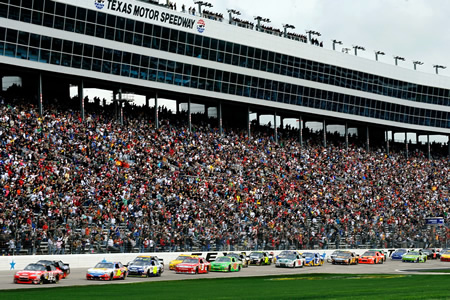
Photo: Tony Stewart, driver of the #14 Office Depot / Old Spice Chevrolet, leads the field at the start of the NASCAR Sprint Cup Series Samsung Mobile 500 at Texas Motor Speedway on April 19, 2010 in Fort Worth, Texas. (Photo by Rusty Jarrett/Getty Images for NASCAR. © 2010 Getty Images)
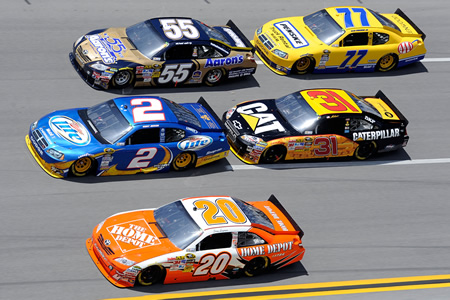
Photo: Kurt Busch, driver of the #2 Miller Lite Dodge, races Joey Logano, driver of the #20 Home Depot Toyota, and Michael Waltrip, driver of the #55 Aaron's 55th Anniversary Toyota, side by side ahead of Jeff Burton, driver of the #31 Caterpillar Chevrolet, and Sam Hornish Jr., driver of the #77 Penske Truck Rental/AAA Dodge, during the NASCAR Sprint Cup Series Aaron's 499 at Talladega Superspeedway on April 25, 2010 in Talladega, Alabama. (Photo by John Harrelson/Getty Images for NASCAR. © 2010 Getty Images)
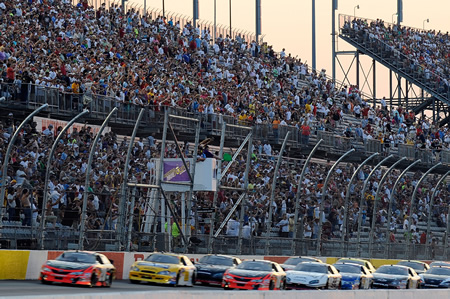
Photo: Denny Hamlin, driver of the #20 Z-Line Designs / Operations Helmet Toyota, leads the field at the start of the NASCAR Nationwide series Royal Purple 200 presented by O'Reilly Auto Parts at Darlington Raceway on May 7, 2010 in Darlington, South Carolina. (Photo by Rusty Jarrett/Getty Images for NASCAR. © 2010 Getty Images)
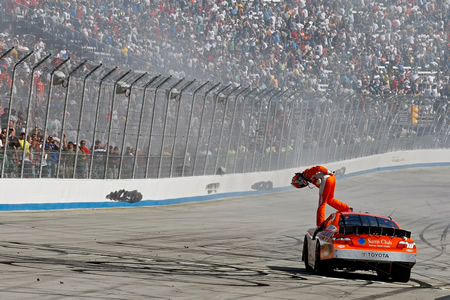
Photo: Kyle Busch, driver of the #18 Combos Toyota, takes a celebratory bow after winning the NASCAR Nationwide Series Heluva Good! 200 at Dover International Speedway on May 15, 2010 in Dover, Delaware. (Photo by Geoff Burke/Getty Images for NASCAR. © 2010 Getty Images)
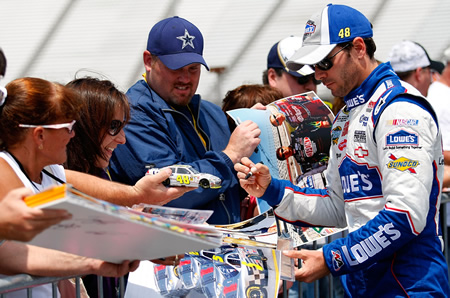
Photo: Jimmie Johnson, driver of the #48 Lowe's Chevrolet, signs autographs after practice for the NASCAR Sprint Cup Series at Dover International Speedway on May 14, 2010 in Dover, Delaware. (Photo by Geoff Burke/Getty Images for NASCAR. © 2010 Getty Images)

Photo: Greg Biffle, driver of the #16 US Census Ford, races Carl Edwards, driver of the #99 Scotts Ford, during the NASCAR Sprint Cup Series at Bristol Motor Speedway on March 21, 2010 in Bristol, Tennessee. (Photo by Jason Smith/Getty Images for NASCAR. © 2010 Getty Images)
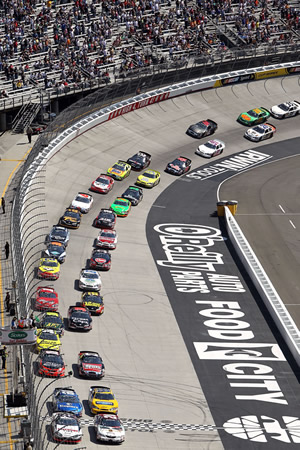
Photo: Brad Keselowski, driver of the #22 Discount Tire Dodge, and Joey Logano, driver of the #20 GameStop Toyota, lead the field to the green flag to start the NASCAR Nationwide Series at Bristol Motor Speedway on March 20, 2010 in Bristol, Tennessee. (Photo by Doug Pensinger/Getty Images. © 2010 Getty Images)
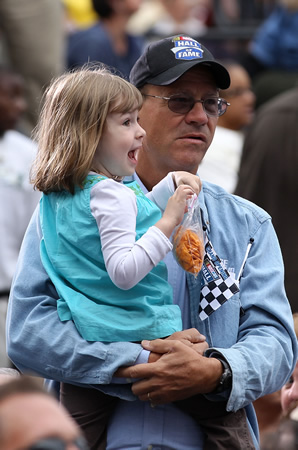
Photo: A young fan and her father watch on during the NASCAR Hall of Fame Grand Opening at the NASCAR Hall of Fame on May 11, 2010 in Charlotte, North Carolina. (Photo by Streeter Lecka/Getty Images for NASCAR Hall of Fame. © 2010 Getty Images)
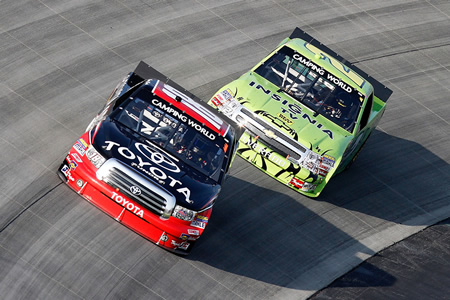
Photo: Kyle Busch drives the #18 Toyota Tundra Toyota ahead of Elliott Sadler, driver of the 2 Insignia TV/Best Buy Chevrolet, during the NASCAR Camping World Truck Series Dover 200 at Dover International Speedway on May 14, 2010 in Dover, Delaware. (Photo by Jason Smith/Getty Images for NASCAR. © 2010 Getty Images)
• The National Association for Stock Car Auto Racing, Inc. (NASCAR) is the sanctioning body for one of North America's premier sports. NASCAR is the No. 1 spectator sport - holding 17 of the top 20 highest attended sporting events in the USA. NASCAR races are broadcast in more than 150 countries and in 20 languages.
• NASCAR fans are the most brand loyal in all of sports, and as a result more large corporations participate in NASCAR than in any other sport.
|GlobalGiants.Com|
Edited & Posted by the Editor | 8:15 AM | View the original post
• Delivering Automated Enhanced Physical Security Alerts, From Students to Their Helpers or Security Personnel.



SOS LINK(TM) announces it has signed on with Blackboard Inc. as a Content Network Provider. For this agreement, Campus SOS LINK(TM) has been custom designed and launches today adding to the physical safety and security needs of millions of students within global Blackboard communities.

Photo: New "City of Learning" Campus. Print Courtesy of American University in Cairo.
Campus is a software application that runs on selected smartphones. It is now available for download on Apple iTunes for iPhone and Blackberry App World for selected models. Campus retails for $14.99/year per person for a one year membership. The agreement between SOS LINK and Blackboard further results in students being able to access Campus from their Tools menu after they sign in to their Blackboard operated educational facility website.

Using SOS LINK's patented process, students can quickly and automatically issue alerts to their chosen friends, family members or security personnel, who may receive them in as little as 15 seconds.
These alerts include: numerous emailed photos of what the student sees, along with their GPS location, as well as a follow up phone call and text message that is sent to up to four chosen helpers. End-to-end encryption enhances the potential of using these photos as legal evidence, resulting in a new deterrent for perpetrators.
"There is published government research and many news stories documenting the tens of thousands of reported threats, stalking, assaults and other crimes on campus facilities annually," said Chris Rush, Vice President of SOS LINK. "Smartphones are in widespread use and are usually readily at hand. They are a natural device to use for issuing an alert, notifying those that care about you, and capturing valuable evidence. We believe Campus will contribute significantly to crime prevention. After all, no one wants to get caught in the act."

Campus SOS LINK runs on many smartphones and provides an added layer of security to students when they are commuting, walking between classes, exercising, or traveling - wherever wireless coverage is in place.
SOS LINK provides personal portable security and develops innovative patent-based software solutions for smartphones and other smart-wireless devices that take advantage of their portability and increasing global use.
Source: SOS LINK
|GlobalGiants.Com|
Edited & Posted by the Editor | 4:13 AM | View the original post
• Singapore and Hong Kong are the most open economies to international trade in 2010.
• Vietnam gains 18 positions among 125 countries in The Global Enabling Trade Report 2010.
• Turkey, India and Russia drop in the rankings.
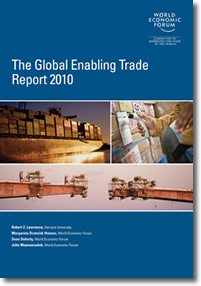
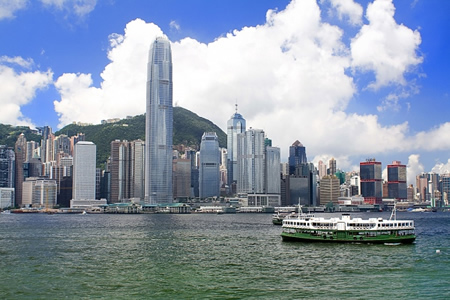
Photo: Victorial Harbour, Hong Kong.
East Asian economies - Singapore and Hong Kong SAR - continue to occupy the top two positions in the Enabling Trade Index ranking, followed by Denmark, Sweden and Switzerland, according to The Global Enabling Trade Report 2010, released today by the World Economic Forum in Geneva.
New Zealand moves by five ranks to 5th place. Norway, Canada, Luxembourg and the Netherlands complete the top-10 list. Iceland enters the ranking for the first time at 11th position, and Finland drops out of the top 10 to 12th place.
Among the large economies, Germany is the best performer at 13th, ahead of the United States, which drops by three places to 19th. China (48th) and Brazil (87th) remain stable, while Turkey (62nd), India (84th) and Russia (114th) drop in the ranking.

The results mirror the resilience against the threat of protectionism during the economic crisis. International agreements such the WTO framework and pledges by the G20 have contributed to limiting the effect of protectionist pressures on trade barriers. Despite fears of rising protectionism, the report confirms that a large majority of countries did not raise trade barriers.


"Just as trade was a key force spreading the growth slowdown internationally, so can trade be an important driver in diffusing the benefits of recovery across the globe. When individual countries enable trade, they provide benefits not only to themselves but also to other nations with which they trade. Improved market access, more efficient customs, and better infrastructure and business environments offer enhanced opportunities for both importers and exporters. Thus, granting Aid for Trade to help nations implement such measures reflects enlightened self-interest, because it enhances welfare in recipient countries and their trading partners," said Robert Z. Lawrence, Albert L. Williams Professor of Trade and Investment at the John F. Kennedy School of Government at Harvard University, USA. Professor Lawrence is also academic adviser and co-editor of the report.
• Published for the third year in a row and covering 125 economies worldwide, the report presents a resource for dialogue and provides a yardstick of the extent to which economies have in place the necessary attributes for enabling trade and where improvements are most needed.
• Get The Global Enabling Trade Report 2010
Source: The World Economic Forum, Geneva, Switzerland.
|GlobalGiants.Com|
Edited & Posted by the Editor | 11:56 PM | View the original post


Photo: Actors Eddie Murphy, Cameron Diaz and Mike Myers arrive at the premiere of DreamWorks Animation's "Shrek Forever After" at Gibson Amphitheatre on May 16, 2010 in Universal City, California. (Photo by Kevin Winter/Getty Images for Paramount Pictures) © 2010 Getty Images.
[Shrek was a 2001 American animated comedy film. Based on William Steig's 1990 fairy tale picture book Shrek!, the film was produced by DreamWorks Animation. Shrek was the first film to win an Academy Award for Best Animated Feature, a category introduced in 2001.
The film stars Mike Myers as a big, strong, solitude-loving, intimidating ogre (a giant or monster in legends and fairy tales) named Shrek. Shrek also features Cameron Diaz as the beautiful but very down-to-earth and feisty Princess Fiona and Eddie Murphy as a talkative donkey named Donkey. The same actors appear in the same roles in the movie Shrek Forever After]

Photo: Actress Cheryl Hines (R) arrives at the premiere of DreamWorks Animation's "Shrek Forever After" at Gibson Amphitheatre on May 16, 2010 in Universal City, California. (Photo by Kevin Winter/Getty Images for Paramount Pictures) © 2010 Getty Images.
The Story of the New Film -- Shrek Forever After:
After challenging an evil dragon, rescuing a beautiful princess and saving your in-laws' kingdom, what's an ogre to do? Well, if you're Shrek, you suddenly wind up a domesticated family man. Instead of scaring villagers away like he used to, a reluctant Shrek now agrees to autograph pitch forks. What's happened to this ogre's roar? Longing for the days when he felt like a "real ogre," Shrek is duped into signing a pact with the smooth-talking dealmaker, Rumpelstiltskin. Shrek suddenly finds himself in a twisted, alternate version of Far Far Away, where ogres are hunted, Rumpelstiltskin is king and Shrek and Fiona have never met. Now, it's up to Shrek to undo all he's done in the hopes of saving his friends, restoring his world and reclaiming his one True Love.
Shrek Forever After opens in theaters on May 21, 2010.
• DreamWorks Animation creates high-quality entertainment meant for audiences around the world. All of DreamWorks Animation's feature films are now being produced in 3D.
Source: Paramount Pictures Corporation
|GlobalGiants.Com|
Edited & Posted by the Editor | 10:18 AM | View the original post
 |
 |
